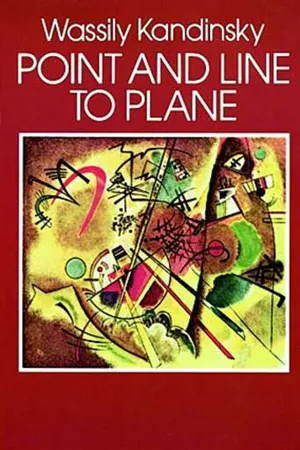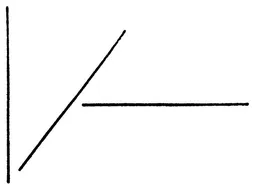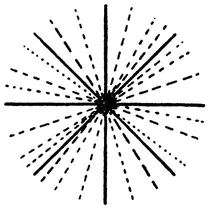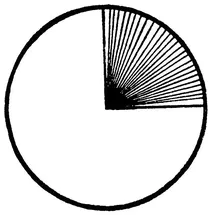
Point and Line to Plane
Wassily Kandinsky
- 192 pages
- English
- ePUB (mobile friendly)
- Available on iOS & Android
Point and Line to Plane
Wassily Kandinsky
About This Book
`I had the impression that here painting itself comes to the foreground; I wondered if it would not be possible to go further in this direction.`
Thus did the young Russian painter Wassily Kandinsky (1866–1944) react to his first viewing of Monet's Haystack, included in an 1895 Moscow exhibit of French Impressionists. It was his first perception of the dematerialization of an object and presaged the later development of his influential theories of non-objective art.
During study and travel in Europe, the young artist breathed the heady atmosphere of artistic experimentation. Fauvism, Cubism, Symbolism, and other movements played an important role in the development of his own revolutionary approach to painting. Decrying literal representation, Kandinsky emphasized instead the importance of form, color, rhythm, and the artist's inner need in expressing reality.
In Point and Line to Plane, one of the most influential books in 20th-century art, Kandinsky presents a detailed exposition of the inner dynamics of non-objective painting. Relying on his own unique terminology, he develops the idea of point as the `proto-element` of painting, the role of point in nature, music, and other art, and the combination of point and line that results in a unique visual language. He then turns to an absorbing discussion of line — the influence of force on line, lyric and dramatic qualities, and the translation of various phenomena into forms of linear expression. With profound artistic insight, Kandinsky points out the organic relationship of the elements of painting, touching on the role of texture, the element of time, and the relationship of all these elements to the basic material plane called upon to receive the content of a work of art.
Originally published in 1926, this essay represents the mature flowering of ideas first expressed in Kandinsky's earlier seminal book, Concerning the Spiritual in Art. As an influential member of the Bauhaus school and a leading theoretician of abstract expressionism, Kandinsky helped formulate the modern artistic temperament. This book amply demonstrates the importance of his contribution and its profound effect on 20th-century art.
Frequently asked questions
Information
LINE
- application of one force and
- application of two forces:
- single or repeated, alternate action of both forces,
- simultaneous action of both forces.
- of the tension, and
- of the direction.
- The simplest form of the straight line is the horizontal. In the human imagination, this corresponds to the line or the plane upon which the human being stands or moves. The horizontal line is also a cold supporting base which can be extended on the level in various directions. Coldness and flatness are the basic sounds of this line, and it can be designated as the most concise form of the potentiality for endless cold movement.
- In complete contrast to this line, in both an external and inner sense, is the vertical which stands at right angles to it, and in which flatness is supplanted by height, and coldness by warmth. Therefore, the vertical line is the most concise form of the potentiality for endless warm movement.
- The third type of straight line is the diagonal which, in schematic form, diverges from both of the above at the same angle and, therefore, has the same inclination to both of them; a circumstance which determines its inner sound—equal union of coldness and warmth. Therefore, the diagonal line is the most concise form of the potentiality for endless cold-warm movement (Figs. 14 and 15).

Basic types of geometric straight
lines.

Diagram of basic types.
| Endless movement. | 1. cold form, | Most concise forms of the potentiality for endless movement. |
| 2. warm form, | ||
| 3. cold-warm form. |

Diagram of deviations in temperature.

Condensation.

Circle as result of condensation.
Table of contents
- Title Page
- Copyright Page
- Table of Contents
- PREFACE
- FOREWORD
- FOREWORD TO THE SECOND EDITION
- INTRODUCTION
- POINT
- LINE
- BASIC PLANE
- APPENDIX
- INDEX